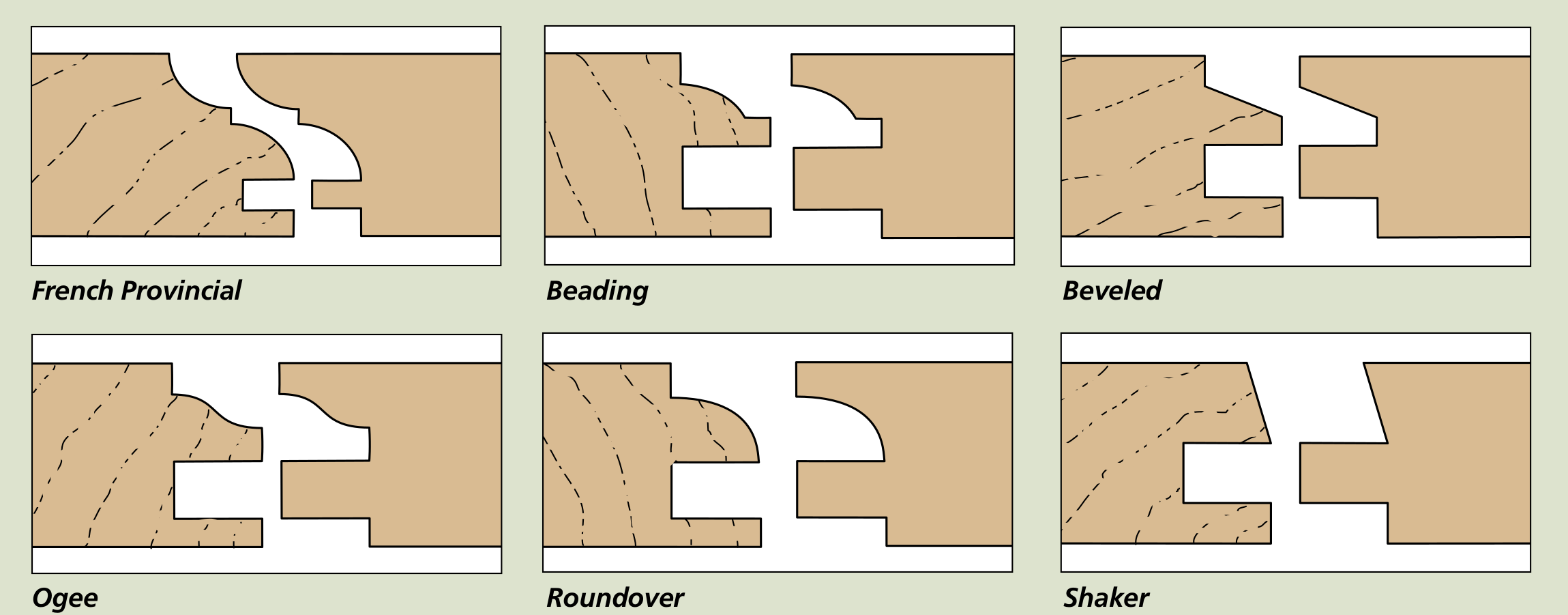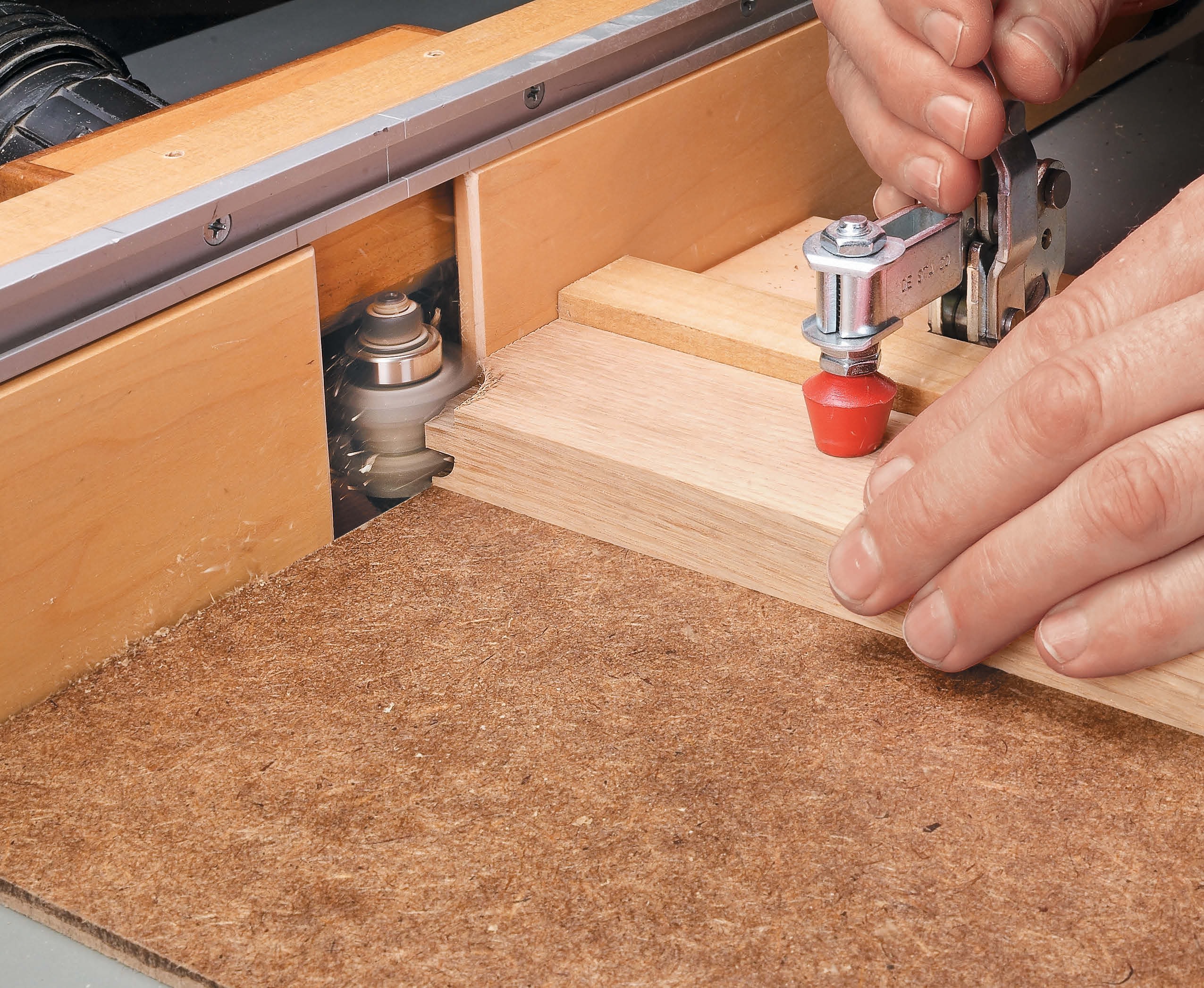Stile and Rail Cabinet Door Construction: Stile And Rail Cabinet Doors

Stile and rail cabinet doors, a hallmark of traditional woodworking, offer a timeless aesthetic and enduring strength. Their construction, while seemingly simple, relies on precise joinery for a durable and visually appealing result. This section details the process, material considerations, and practical steps involved in creating these classic doors.
Traditional Stile and Rail Construction Methods
Traditional stile and rail doors are constructed from a frame of vertical stiles and horizontal rails, joined together using various techniques. Common joinery methods include mortise and tenon, dowel joints, and biscuit joints. The mortise and tenon joint, considered the strongest and most aesthetically pleasing, involves cutting precisely sized recesses (mortises) in the stiles and corresponding tenons on the rails. These are then glued and often reinforced with screws or dowels for added security. Dowel joints, while simpler to execute, offer a strong connection, especially when multiple dowels are used. Biscuit joints, created using a biscuit joiner, provide a quick and relatively strong joint, suitable for less demanding applications. Once the frame is assembled and glued, panels are fitted within the frame, creating the finished door.
Solid Wood versus Engineered Wood for Stile and Rail Doors
The choice between solid wood and engineered wood significantly impacts the final product’s cost, durability, and aesthetic appeal. Solid wood doors, crafted from hardwoods like oak, cherry, or maple, offer superior strength, durability, and a rich, natural grain. However, they are more expensive and susceptible to warping or cracking with changes in humidity. Engineered wood, such as medium-density fiberboard (MDF) or plywood, provides a more cost-effective alternative. MDF offers a smooth, paintable surface, while plywood offers greater strength and stability. Engineered wood doors are less prone to warping but may lack the inherent beauty and character of solid wood. The choice depends on the budget, desired aesthetic, and the environmental conditions where the door will be installed.
Building a Simple Stile and Rail Cabinet Door: A Step-by-Step Guide
This guide Artikels the construction of a simple raised-panel door using a mortise and tenon joint.
Tools: Table saw, mortise machine or chisel, router, clamps, wood glue, sandpaper, measuring tape, pencil.
Materials: Stiles and rails (cut to size), panel (slightly smaller than the frame opening), wood glue, wood screws (optional), wood finish.
Steps:
1. Cut Stiles and Rails: Cut the stiles and rails to the desired dimensions, ensuring precise accuracy.
2. Cut Mortises and Tenons: Cut the mortises in the stiles and the corresponding tenons on the rails. Ensure a tight fit.
3. Assemble the Frame: Apply wood glue to the tenons and mortises, and carefully assemble the frame. Clamp firmly until the glue dries. Optional: reinforce with screws.
4. Cut and Fit the Panel: Cut the panel to fit snugly within the frame.
5. Install the Panel: Glue the panel into the frame.
6. Sand and Finish: Sand the door smooth, and apply the desired finish.
Wood Species Comparison for Stile and Rail Construction
| Wood Species | Cost | Durability | Aesthetic Qualities |
|---|---|---|---|
| Oak | Medium-High | High | Strong grain, classic look |
| Maple | Medium | High | Smooth, light-colored, versatile |
| Cherry | High | High | Rich reddish-brown tones, elegant |
| Pine | Low | Medium | Softwood, easily worked, knotty character |
Design Variations and Styles of Stile and Rail Doors

Stile and rail cabinet doors offer a remarkable range of design possibilities, extending far beyond the basic framework. The careful selection of panel styles, molding profiles, and finishes allows for the creation of doors that seamlessly integrate with diverse kitchen and furniture styles, from traditional to contemporary. Understanding these design elements is key to achieving the desired aesthetic.
Panel Styles, Stile and rail cabinet doors
The choice of panel style significantly impacts the overall look and feel of a stile and rail door. Three common panel styles are raised panel, flat panel, and recessed panel. Raised panel doors feature a central panel that projects outward from the frame, creating a three-dimensional effect. Flat panel doors, as their name suggests, have a flush, flat panel, offering a clean, minimalist appearance. Recessed panel doors present a panel that sits slightly below the frame, adding depth and shadow lines. The subtle differences in these panel types contribute to vastly different visual impressions. Raised panels often convey a sense of traditional elegance, flat panels a modern simplicity, and recessed panels a more understated sophistication.
Molding Profile Influence
Molding profiles, applied to the stiles and rails, play a crucial role in determining the overall aesthetic. A simple, understated profile can contribute to a clean, contemporary design, while more ornate moldings can add a touch of classical elegance or even rustic charm. The depth, shape, and detailing of the molding can drastically alter the visual weight and perceived complexity of the door. For instance, a simple bead molding will create a subtle accent, while a more elaborate ogee molding can add significant visual interest. The choice of molding should be carefully considered in relation to the panel style and the overall design scheme.
Three Unique Stile and Rail Door Designs
The versatility of stile and rail construction allows for a vast array of design options. Here are three unique examples, demonstrating the potential for customization:
Stile and rail cabinet doors – Design 1: Classic Raised Panel Door This design features a simple, rectangular raised panel set within a frame of stiles and rails. The stiles and rails are relatively wide, creating a substantial and traditional feel. A simple, subtle bead molding is applied to the stiles and rails, enhancing the definition of the frame without overpowering the overall design. The panel itself is slightly raised, creating a gentle shadow line that accentuates its form. This design is ideal for traditional or transitional kitchen styles.
Design 2: Modern Flat Panel Door with Grooved Detail This design utilizes a flat panel within a narrower frame, creating a sleeker, more contemporary aesthetic. Instead of traditional moldings, thin, evenly spaced grooves are carved into the stiles and rails, adding a subtle textural element without overwhelming the minimalist design. The flat panel offers a clean, uncluttered surface, complementing the simple lines of the frame. This design would be suitable for modern or minimalist kitchen designs.
Design 3: Rustic Recessed Panel Door with Decorative Molding This design showcases a recessed panel within a wider frame, reminiscent of farmhouse or rustic styles. The stiles and rails are wider, and a more substantial, decorative molding, perhaps an ogee or cove profile, is used to create visual interest. The recessed panel adds depth and shadow, enhancing the overall texture of the door. The wood grain is allowed to show prominently, contributing to the rustic character. This style is perfect for kitchens with a country or farmhouse feel.
Wood Finish Enhancement
The final appearance of a stile and rail door is significantly impacted by the chosen wood finish. A natural, clear finish will showcase the wood grain and color, highlighting the natural beauty of the material. A stained finish can dramatically alter the color and tone of the wood, allowing for greater design flexibility. For instance, a dark walnut stain can create a rich, sophisticated look, while a lighter oak stain can create a warmer, more inviting atmosphere. Consider also the use of a sealant to protect the wood from moisture and wear. A matte finish offers a more understated elegance, while a high-gloss finish adds a dramatic shine. The selection of the finish should complement the overall design and style of the door and the surrounding space. For example, a high-gloss finish might be more appropriate for a modern kitchen, while a matte finish might be preferred for a more traditional setting.
Installation and Maintenance of Stile and Rail Doors

Installing stile and rail cabinet doors requires precision and attention to detail. Proper installation ensures a professional finish and the longevity of your cabinetry. This section details the process, common issues, and maintenance strategies to keep your doors looking their best.
Installing Stile and Rail Cabinet Doors
The installation process begins with preparing the cabinet. Ensure the cabinet face frame is square and level. Accurate measurements are crucial for proper alignment. Next, hinges are attached to the cabinet and the door. The hinge placement will vary depending on the door style and hinge type. Common hinge types include full overlay, half overlay, and inset hinges. Each type has specific placement requirements. After attaching the hinges, carefully hang the door on the hinges, ensuring proper alignment. Fine adjustments can be made using the hinge screws to achieve a flush fit. Finally, the door should be checked for proper functionality and alignment. A slightly loose fit is often preferable to a tight one to account for seasonal wood movement.
Troubleshooting Common Installation Problems
Several common issues arise during stile and rail door installation. One common problem is misaligned doors. This usually stems from inaccurate measurements or improper hinge placement. Rectifying this involves carefully adjusting the hinge screws to realign the door. Another issue is doors that are too tight or too loose. A tight door may be due to swelling wood or inaccurate measurements, while a loose door might indicate incorrect hinge placement or warped wood. Solutions include planing down the door slightly or adjusting the hinges. Lastly, doors that don’t close properly could be caused by warped doors, uneven cabinet framing, or obstructions. Addressing these issues requires careful examination of the door and cabinet, possibly involving planing, sanding, or shimming.
Maintaining Stile and Rail Cabinet Doors
Regular maintenance extends the life and beauty of your stile and rail doors. This involves cleaning the doors periodically with a soft cloth and mild detergent. Avoid harsh chemicals or abrasive cleaners, as these can damage the finish. For more stubborn stains, a specialized wood cleaner can be used, always following the manufacturer’s instructions. Periodically inspect the hinges and screws for tightness. Tighten any loose screws to prevent sagging or misalignment. Wood movement due to humidity changes is natural. Addressing any resulting gaps or misalignments with minor adjustments can prevent more significant problems later. Applying a fresh coat of finish every few years can help protect the wood and maintain its appearance. Protecting the doors from excessive moisture or direct sunlight will also significantly extend their lifespan. Finally, avoid slamming the doors, which can damage the wood and hinges over time.
